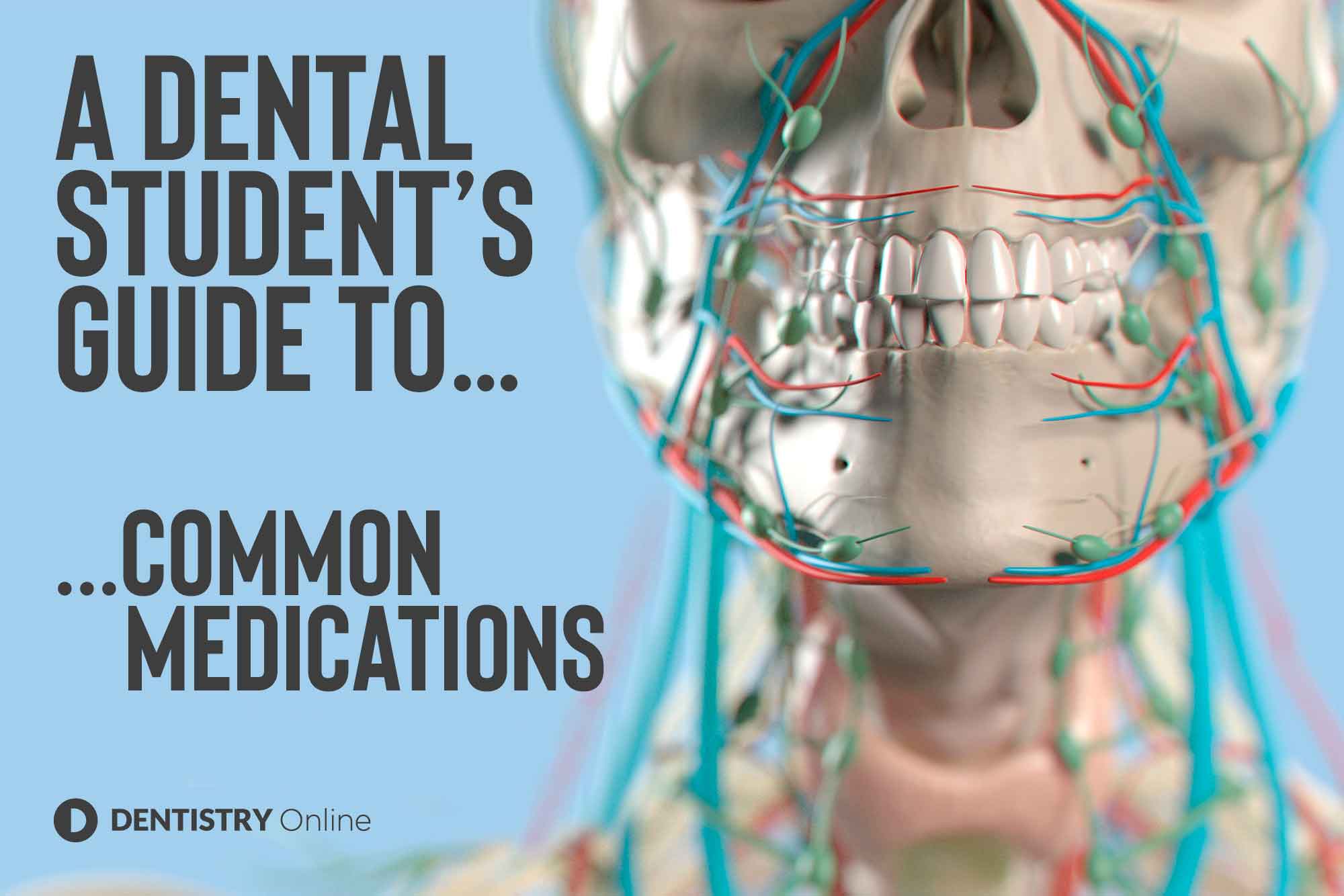 Following on from part one exploring common medications dentists may come across, Hannah Hook and Tina Aster look into antifungals and antivirals.
Following on from part one exploring common medications dentists may come across, Hannah Hook and Tina Aster look into antifungals and antivirals.
Throughout your dental career it is likely that you will encounter a range of patients presenting with a variety of fungal or viral infections.
You can detect oral manifestations of these infections when carrying out a thorough intra-oral examination. Along with information obtained from a comprehensive medical and pain history.
As with antibiotics, to ensure effective patient management it is useful to know what the available types of antifungals and antivirals are, how they work and when to prescribe them.
Antifungals
Azoles
Examples: Fluconazole, Miconazole.
Mechanism of action: azoles target ergosterol synthesis (Figure 1). Inhibition of the enzyme, which synthesises ergosterol leads to depletion of ergosterol resulting in the formation of a cell membrane with altered structure and function (Ghannoum and Rice, 1999).
Contraindications: do not prescribe azole antifungals to a patient taking warfarin or statins as this increases their effects.
Polyenes
Examples: Amphotericin B (systemic), Nystatin (topical).
Mechanism of action: polyenes are a type of broad-spectrum antifungals that work by disrupting the cell membrane of the fungus. They do this by binding to ergosterol, a steroid in the cell membrane (Figure 1), which leads to depolarisation of the membrane and an increase in K+ and Na+ permeability. This ultimately results in cell death (Birch and Sibley, 2017).
Uses: Nystatin is commonly prescribed for patients where azole antifungals are contraindicated.
Contraindications: no contraindications listed in the BNF (NICE, 2020).
Antifungal prescribing
The majority of oral fungal infections are caused by yeasts belongings to the genus Candida.
Patients who are undergoing antibiotic therapy, taking systemic or inhaled steroids, on immunosuppressive medication or have endocrine disorders such as diabetes are predisposed to oral fungal infections.
When a patient attends with an oral fungal infection attempt to resolve the infection with local measures first. Whilst the majority of oral fungal infections can be treated in a primary care setting, chronic hyperplastic candidosis, also known as candida leukoplakia, is potentially premalignant and you should therefore refer patients with this condition to a specialist.
| Condition | Local measures | Prescribing |
| Pseudomembranous Candidosis
|
|
Fluconazole capsules
Miconazole Oromucosal Gel
Nystatin Oral suspension, 100,000 units/ml
|
| Erythematous Candidosis
|
||
| Denture Stomatitis |
|
|
| Angular Cheilitis |
|
Miconazole cream, 2%
Sodium Fusidate ointment, 2%
|
Table 2: Antifungal prescribing following guidance from SDCEP and FGDP
Antivirals
Example: Aciclovir
Mechanism of action: when aciclovir enters a cell infected with HSV or VSV, it undergoes molecular changes and inhibits viral DNA enzymes. This enables the drug to incorporate into the viral DNA itself, thus terminating the chain and preventing it from replicating (Gnann, Barton and Whitley, 1983).
Aciclovir does not destroy the target pathogen but inhibits viral growth and development. Therefore, HSV and VSV will stay latent in the body and can recur (Kinchington et al, 2012).
Uses: to treat viral infections, the most common viral infections a dentist may see are caused by herpes simplex virus (HSV) or varicella-zoster virus (VSV).
Contraindications: risk of hypersensitivity, can interact with ibuprofen. Dosages will need adjusting for children, elderly, pregnant/breastfeeding women and those with renal impairment (consult the GP) (NICE, 2020).
Antiviral prescribing
Viral infections are usually short-lived and diagnosed by their clinical presentation.
Whilst viral infections of the oral cavity are common, caution is necessary in those who are unable to take fluids or are severely immunocompromised, putting them at risk of dehydration. Refer such patients to hospital, along with patients experiencing prolonged non-resolving infections.
| Condition | Local measures | Prescribing | |
| HSV | Primary herpetic gingivostomatitis
|
|
Benzydamine Oromucosal spray 0.15%
|
| Herpes labialis
|
|
Aciclovir cream 5%
|
|
| Infection in immunocompromised patients or those with severe infection |
|
Aciclovir Tablets
|
|
| VSV | Shingles
|
|
Aciclovir tablets
|
Table 2: Antiviral prescribing following guidance from SDCEP and FGDP
References
Birch M and Sibley G (2017) Antifungal Chemistry Review. In: Comprehensive Medicinal Chemistry III 703-16
Ghannoum MA and Rice LB (1999) Antifungal agents: Mode of action, mechanisms of resistance, and correlation of these mechanisms with bacterial resistance. Clinical Microbiology Reviews 12: 501-17
Gnann JW, Barton NH and Whitley RJ (1983) Acyclovir: Mechanism of Action, Pharmacokinetics, Safety and Clinical Applications. Pharmacother J Hum Pharmacol Drug Ther 3: 275-83
Kinchington PR, Leger AJS, Guedon J-MG and Hendricks R (2012) Herpes simplex virus and varicella zoster virus, the house guests who never leave. Herpesviridae 3: 5
NICE (2020) BNF: British National Formulary. NICE


